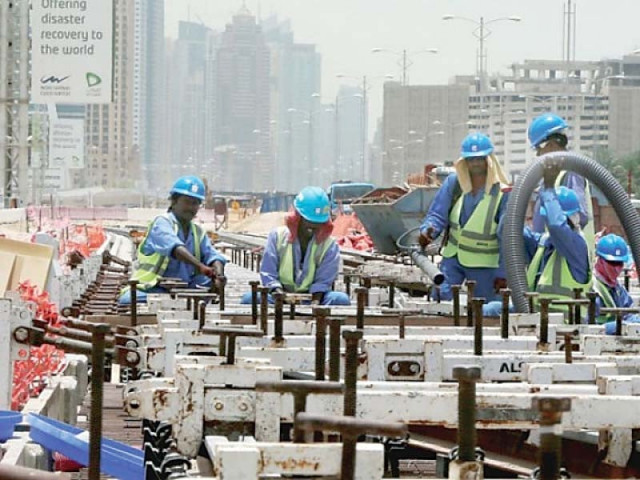Pakistani migrants bounce back
Increase witnessed in wake of rising income of oil-exporting Arab countries

The number of Pakistani nationals migrating for work mostly to the Gulf countries has bounced back to the pre-Covid-19 level to around 65,000 per month in January 2022 in the wake of rising income of oil exporting Arab countries and advanced economies around the world.
“The monthly flow of Pakistani workers (abroad) has reverted to pre-Covid levels,” the State Bank of Pakistan (SBP) said in its half-yearly report on the State of Pakistan’s Economy for July-December of fiscal year 2021-22 released on Friday.
Over 70% of Pakistani workers go to GCC countries mostly to Saudi Arabia and the United Arab Emirates (UAE).
The number of migrating Pakistani workers plunged to zero during the initial five months of the pandemic – April-August 2020, according to the central bank’s report.
The normalisation of the flow of workers to foreign countries along with a surge in the income of oil exporting GCC countries indicates the inflow of workers’ remittances to Pakistan will remain steady at around “$32 billion in the current fiscal year 2023 compared to $31 billion in FY22”, Topline Research projected last week.
As many as 458,257 Pakistanis proceeded abroad for employment in the first seven months (January-July) of 2022. This translates into 65,465 in each of the seven months, according to the Bureau of Emigration and Overseas Employment’s (BE&OE) official website.
A record high number of 946,571 Pakistanis went abroad for employment in 2015, translating to 78,881 each month during the year, according to the Bureau.
According to the SBP report, it took almost two years to normalise the monthly flow of Pakistani migrants for work to the Middle Easter countries to pre-pandemic level. It was January 2020 when around 65,000 Pakistani went abroad for job purposes last time before the outbreak of the virus in Pakistan in February 2020.
The central bank’s report said no word on the economic outlook for the current fiscal year 2023, as it usually does in its quarterly, half-yearly and annual reports. Instead, it gave an outdated outlook for the second half (January-June) of FY22.
To recall, the country achieved economic growth of 6% for the second consecutive fiscal year in 2021-22.
The central bank said in its latest State of Pakistan’s Economy report that the collection of revenue in taxes to the government increased notably, but mostly due to increased imports during the first half of the previous fiscal year ended June 30, 2022.
Federal Board of Revenue’s (FBR) collection of revenue in taxes increased by 32% in the first half of FY22, notwithstanding somewhat slower growth in the second quarter (Oct-Dec FY22), as economic activities improved and general price levels rose as compared to last year.
“However, most of this increase stemmed from import-related taxes, on account of the broad-based increase in import volumes, international commodity prices, and PKR (Pakistani rupee) depreciation,” SBP said in the report.
The government, however, sharply cut imports in the first month (July) of the current fiscal year 2022 to $4.9 billion to avert the risk of default on international payments ahead of the resumption of IMF’s extended $7 billion loan programme in last week of the current month of August 2022.
The imports had hit a five-month high at $2.3 billion in June.
Finance Minister Miftah Ismail said the other day the curb on imports would remain in place over the next three to four-month to improve the country’s capacity to make import payments and foreign debt 946,571 repayments.
The import curtailment may compromise FBR collection of revenue in taxes in the three to fourth-month of low imports in FY23.
From the perspective of the first half of FY22, the large-scale manufacturing (LSM) exhibited broad-based expansion, exports grew buoyant alongside growth in FBR taxes and Kharif crops recorded higher production, the central bank said.
However, amid multi-year high global commodity prices, rising inflation and current account deficit posed a challenge as the year progressed, it said.
“These pressures necessitated monetary tightening amidst other regulatory measures to moderate demand.”
Published in The Express Tribune, August 13th, 2022.
Like Business on Facebook, follow @TribuneBiz on Twitter to stay informed and join in the conversation.



















COMMENTS
Comments are moderated and generally will be posted if they are on-topic and not abusive.
For more information, please see our Comments FAQ